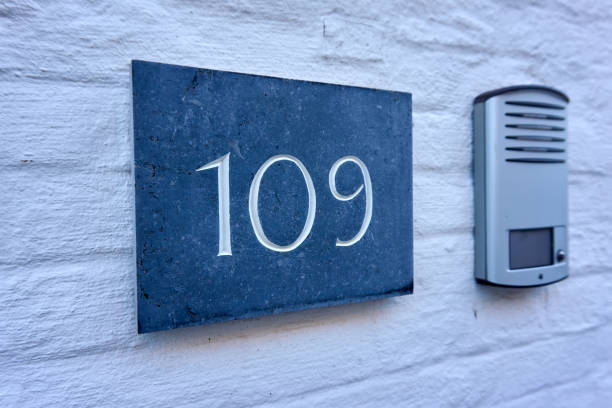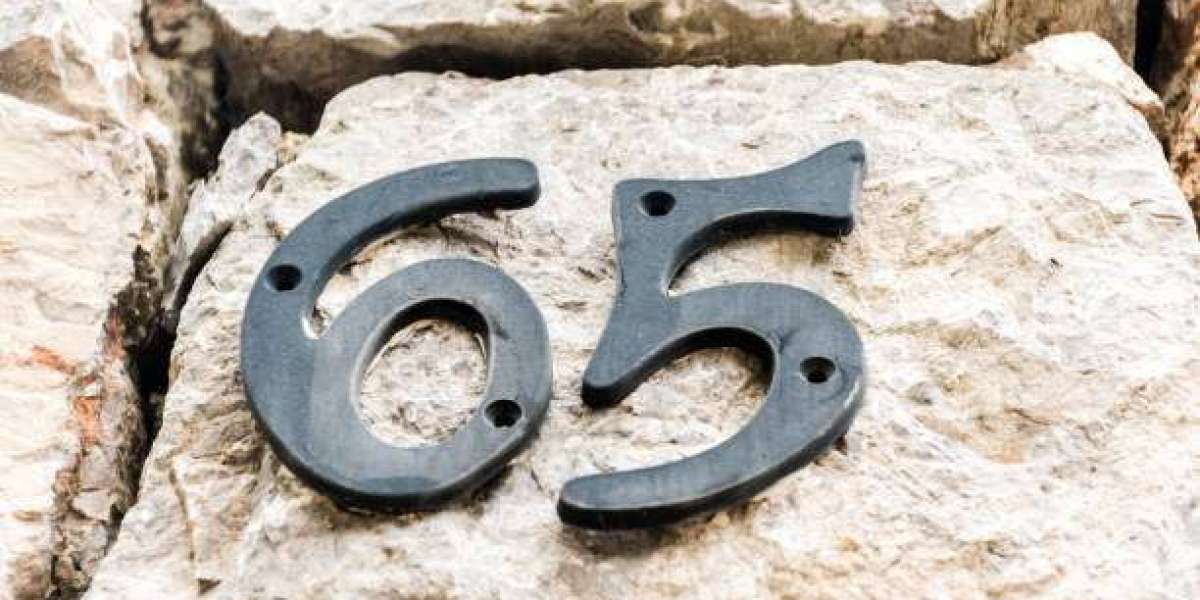In residential and commercial architecture, visibility and functionality are essential elements of exterior design. While landscaping, lighting, and facade materials often receive the most attention, house numbers are a subtle but critical component that serves both aesthetic and practical purposes. For modern homes, the clarity and placement of house numbers can impact emergency response times, delivery accuracy, guest navigation, and the overall curb appeal of the property. Whether for a single-family residence or a multi-unit development, the size of your modern house numbers plays a direct role in how easily they can be seen and read from various distances.
Why Visibility Matters in House Number Design
Clear house number signage ensures that visitors, delivery drivers, maintenance crews, and first responders can locate a home quickly and without confusion. In urgent situations, such as medical emergencies or fire response, even a few seconds of delay caused by hard-to-read numbers can have serious consequences. From a property management standpoint, especially in multifamily housing or gated communities, uniform and visible signage also reflects professionalism and thoughtful planning.
Visibility goes beyond just the numbers themselves it also involves their contrast with the background, illumination at night, and durability against weathering. However, the foundation of good visibility always begins with appropriately sized numbers.
Guidelines Based on Viewing Distance
One of the most straightforward ways to determine house number size is by measuring the distance between the sign’s location and the point from which it will typically be viewed—most often the street or driveway. A general rule of thumb is that for every 10 feet of viewing distance, the numbers should be at least 1 inch tall.
For example:
If your house is set 30 feet from the road, the numbers should be at least 3 inches tall.
At 50 feet, a minimum of 5 inches is recommended.
For homes more than 100 feet from the street, consider using numbers 8 inches or larger.
These recommendations are meant to ensure the numbers are legible without straining the viewer’s eyes or requiring them to slow down significantly while driving. In neighborhoods with high traffic or dim street lighting, increasing the size slightly beyond these minimums can further improve legibility.
Font Style and Its Influence on Size
Not all fonts are created equal in terms of readability. Bold, sans-serif fonts tend to be clearer than ornate or narrow typefaces, especially from a distance. Some modern designs favor ultra-minimalist or artistic fonts that may look appealing up close but can become difficult to interpret when viewed from a car or under poor lighting conditions.
When using a thin or condensed font, it’s advisable to increase the character height slightly to compensate for reduced stroke weight. On the other hand, thick and bold typefaces may offer excellent legibility even at smaller sizes. Proper spacing between characters known as kerning also affects clarity. Numbers that are too close together can blend into one another, particularly at night or from sharp angles.
Height and Placement Considerations
Where the house numbers are placed has a major impact on their visibility. Mounting numbers too high, too low, or in a location obscured by landscaping can undermine even the most legible design. As a best practice, numbers should be mounted between 4.5 to 5.5 feet from the ground, ideally near a primary entry point, garage, or mailbox if it is positioned by the street.
If the numbers are placed on a wall that is perpendicular to the street, they may not be visible until a vehicle is directly in front of the property. In these cases, consider supplemental signage that faces the road, such as a plaque mounted to a mailbox post or a freestanding sign at the front of the driveway.
Elevation also matters in multi-story buildings or homes with raised entrances. In these cases, a larger size may be necessary to compensate for increased viewing distance and angle distortion.
Illumination and Contrast
Even correctly sized house numbers can be ineffective if not visible at night. Adding lighting to house numbers whether through integrated LED backlighting, overhead fixtures, or solar spotlights ensures visibility around the clock.
Contrast is equally important. Black numbers on a dark brick wall may blend in and become invisible, while white numbers on a light stucco surface may lack the definition needed for quick identification. The best visibility results from pairing high-contrast colors, such as black on white, white on navy, or metallic finishes on dark backgrounds. Reflective materials can also enhance nighttime readability, especially in areas without consistent street lighting.
Compliance with Local Regulations
Many municipalities have specific requirements regarding house number size and placement. These rules are often outlined in local building codes or emergency service guidelines and may differ based on property type and location. For instance, rural properties may be required to post larger numbers at the road or on shared driveways to assist emergency personnel.
Failure to meet these regulations can result in penalties or delays in services. Property owners and managers should consult their local building authority or fire department to ensure that their signage complies with all applicable rules. This is especially important for new construction or when remodeling existing exteriors.
Material Durability and Long-Term Visibility
House numbers exposed to the elements must retain their visibility over time. Materials like powder-coated aluminum, stainless steel, and UV-resistant acrylic maintain their appearance in various weather conditions and are less prone to fading, rusting, or peeling. Signs made from wood or inexpensive plastic may degrade quickly, reducing readability and requiring frequent replacement.
Raised or dimensional numbers often perform better over time than painted-on versions, which may chip or wear unevenly. In high-exposure areas, investing in a weatherproof and high-contrast material can significantly extend the life of your signage and reduce maintenance costs.
Application in Property Management and Development
For property managers overseeing apartments, condominiums, or housing developments, standardizing house number size and style creates visual consistency and supports navigation. Residents, visitors, and service providers benefit from a logical, uniform system of signage that is easy to read and understand.
During property development, collaborating with architects and signage designers early in the planning process allows for thoughtful integration of visibility standards. Incorporating signage into the architectural design ensures that it doesn’t become an afterthought but rather a seamless component of the home’s overall presentation.
Conclusion
Choosing the right size for your modern house number sign is more than a matter of style it’s a functional decision that directly affects safety, convenience, and property value. A well-placed, properly sized house number made with durable materials ensures visibility in all conditions and enhances the professional appearance of a residence or development.
By considering viewing distance, font choice, lighting, material, and local regulations, property owners and managers can make informed decisions that serve both aesthetic and practical goals. In a market where attention to detail reflects overall property care, visible house numbers are a subtle yet powerful investment.
FAQs
What size house numbers are best for homes set back from the road?
For homes located 50 feet or more from the street, house numbers should be at least 5 to 8 inches tall for optimal visibility.
Does the font of the house number affect how large it needs to be?
Yes. Thin or decorative fonts may require larger sizes to maintain readability, while bold sans-serif fonts can remain legible at smaller sizes.
Are there legal requirements for house number sizes?
Many municipalities require minimum house number sizes for emergency services. It's important to check local codes to ensure compliance.
Should house numbers be illuminated for better visibility?
Yes. Illuminated house numbers improve visibility at night and during poor weather, reducing the risk of missed deliveries or delayed emergency response.
Where is the best place to mount house numbers for visibility?
Ideally, house numbers should be mounted 4.5 to 5.5 feet above the ground and placed in a spot easily visible from the street, such as near the front door or garage.



